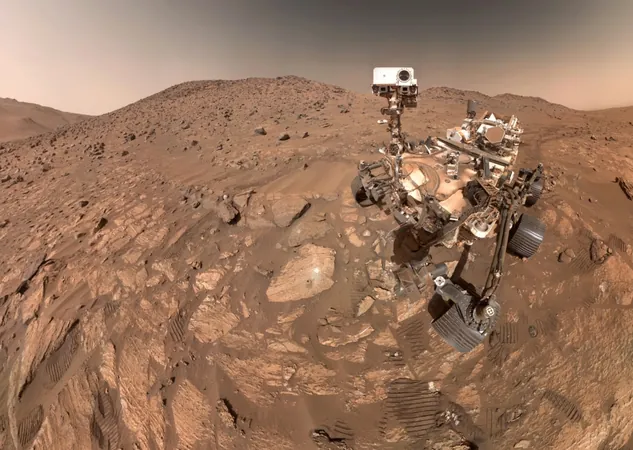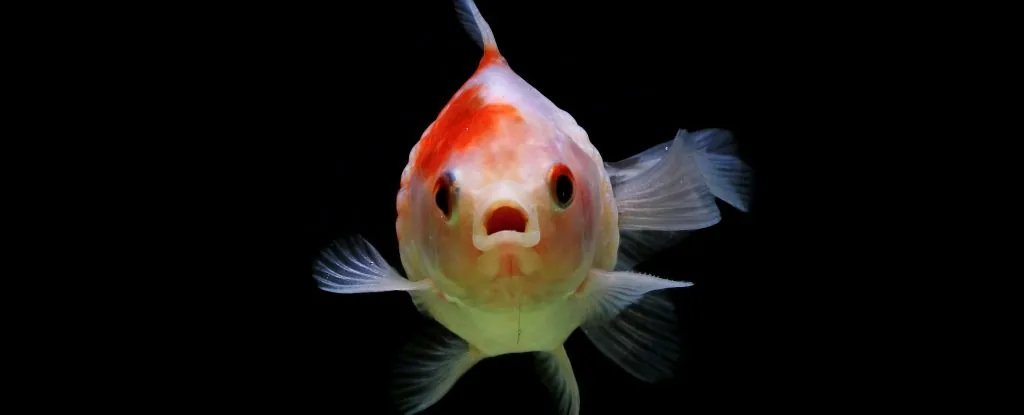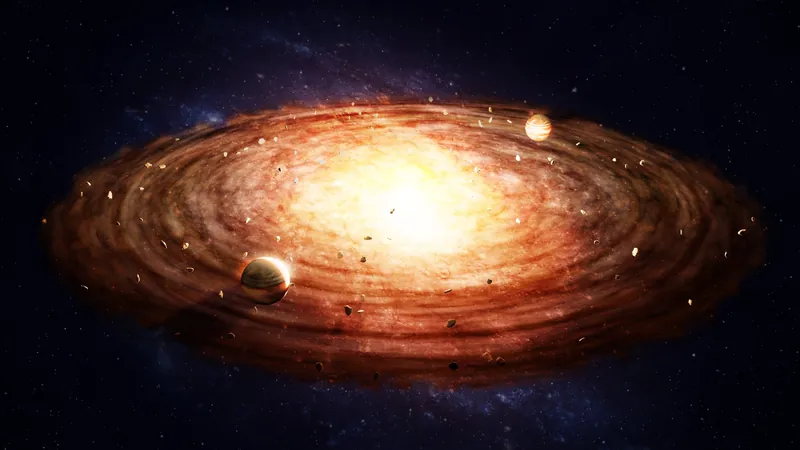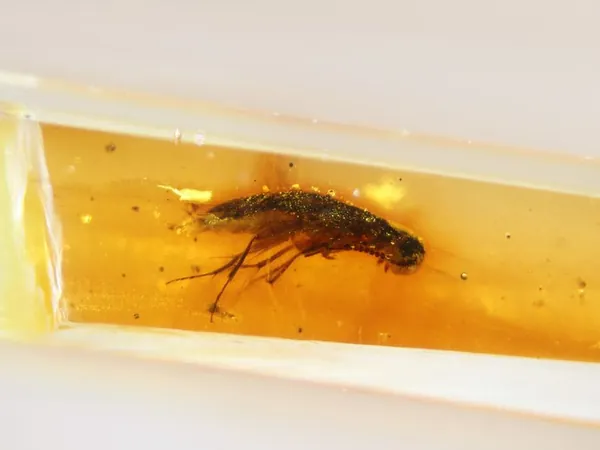
NASA's Perseverance Rover Discovers Potential Signs of Life on Mars
2025-09-21
Author: Michael
A Groundbreaking Discovery on the Red Planet
In an extraordinary revelation, NASA's Perseverance rover has unearthed evidence that might point to ancient microbial life on Mars. A year after drilling into a rock named Cheyava Falls, scientists announced that the sample, dubbed Sapphire Canyon, could contain chemical signatures of life forms that once roamed the Martian surface.
Ancient Martian Landscape Revealed
Found within the Bright Angel formation—a region that was once a thriving river valley—Cheyava Falls emerged in July 2024. Billions of years ago, this area funneled water into Jezero Crater, which hosted a massive lake. The sediment-rich rocks in the region are saturated with clay, silt, and organic carbon—materials known on Earth for preserving microbial remnants.
Moreover, these rocks are loaded with critical ingredients like sulfur, oxidized iron, and phosphorus, potentially fueling primitive life forms. This suggests that Mars might have been habitable far longer than scientists previously believed.
The Curious Case of 'Leopard Spots'
Using advanced instruments on board, Perseverance observed peculiar, vibrant patterns on the Cheyava Falls surface. Dubbed “leopard spots,” these mineral-rich regions consist mainly of two iron-based minerals: vivianite and greigite. Interestingly, vivianite often forms around decomposing organic matter on Earth, while greigite can originate from microbial activity.
While these findings are tantalizing, scientists caution that geological processes alone could explain the mineral formations, leaving the true nature of these spots still open to interpretation.
Revolutionizing the Search for Life
The Cheyava Falls sedimentary rocks are among the youngest studied by Perseverance, challenging the preconceived notion that only older rocks might hold evidence of life. Joel Hurowitz, lead author of the study published in the journal Nature, stated, "This is a potential fingerprint of microbial life," emphasizing the need for thorough investigation.
Mars Sample Return Mission: The Next Step
Since its landing in Jezero Crater in 2021, Perseverance has gathered 27 rock cores, meticulously sealed in metal tubes for potential return to Earth. This mission aims to enable Earth-based laboratories to conduct crucial tests to confirm or deny the presence of biology.
Despite facing setbacks and increased costs, the Mars Sample Return mission remains a priority for NASA. Initially projected to cost $3 billion, estimates have ballooned to between $6-11 billion, with a revised timeline pushing sample delivery to the mid-2030s.
The Ultimate Question: Are We Alone?
The significance of the potential discovery at Cheyava Falls extends beyond mere science; it touches on humanity’s most profound question: Is there life beyond Earth? Acting NASA Administrator Sean Duffy highlighted this finding as a historic milestone, while Nicky Fox, NASA’s associate administrator for science, reflected on the hope of answering whether we are truly alone in the universe.
The Journey Continues
As Perseverance continues to navigate through Jezero Crater, each core sample brings scientists one step closer to unlocking Mars' secrets. If the rocks of Sapphire Canyon indeed reveal ancient signs of life, it would signify the first confirmed evidence of extraterrestrial life—a groundbreaking discovery that forever alters our understanding of the universe.
Until that moment arrives, the samples lie patiently within their metal tubes, guardians of secrets that could redefine human existence.









 Brasil (PT)
Brasil (PT)
 Canada (EN)
Canada (EN)
 Chile (ES)
Chile (ES)
 Česko (CS)
Česko (CS)
 대한민국 (KO)
대한민국 (KO)
 España (ES)
España (ES)
 France (FR)
France (FR)
 Hong Kong (EN)
Hong Kong (EN)
 Italia (IT)
Italia (IT)
 日本 (JA)
日本 (JA)
 Magyarország (HU)
Magyarország (HU)
 Norge (NO)
Norge (NO)
 Polska (PL)
Polska (PL)
 Schweiz (DE)
Schweiz (DE)
 Singapore (EN)
Singapore (EN)
 Sverige (SV)
Sverige (SV)
 Suomi (FI)
Suomi (FI)
 Türkiye (TR)
Türkiye (TR)
 الإمارات العربية المتحدة (AR)
الإمارات العربية المتحدة (AR)